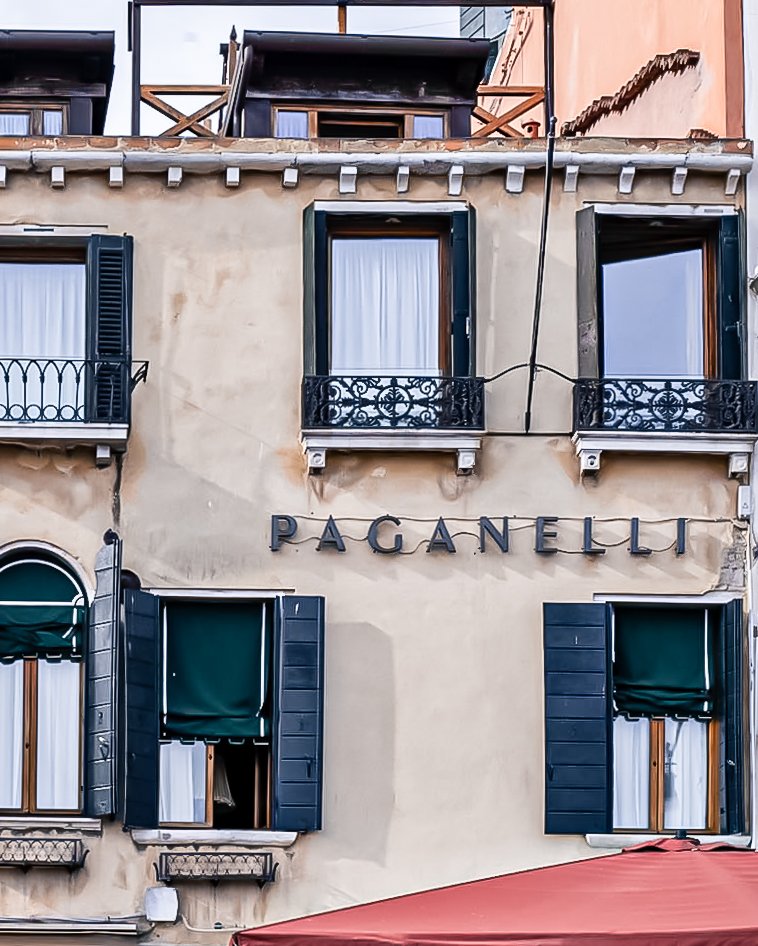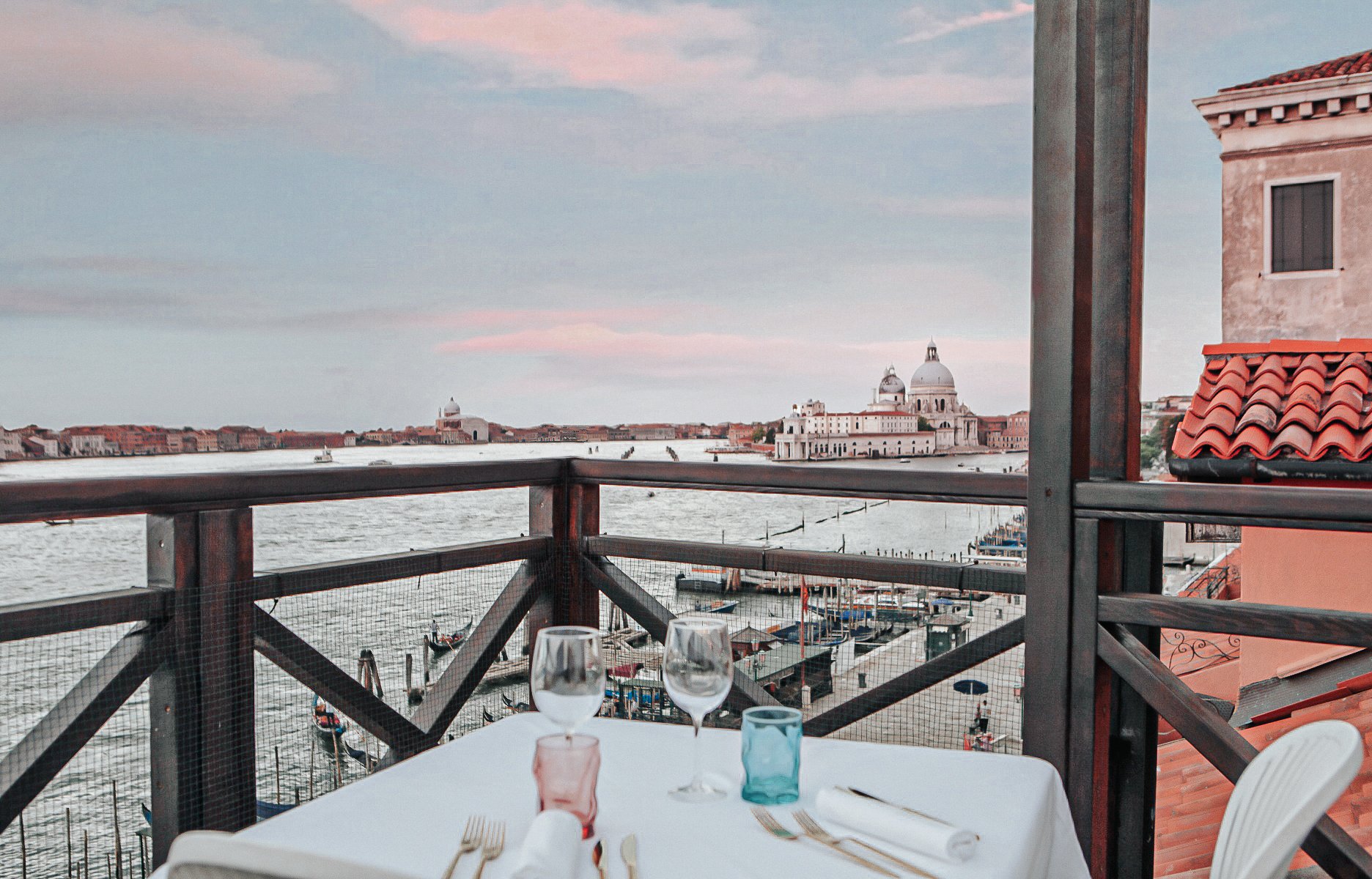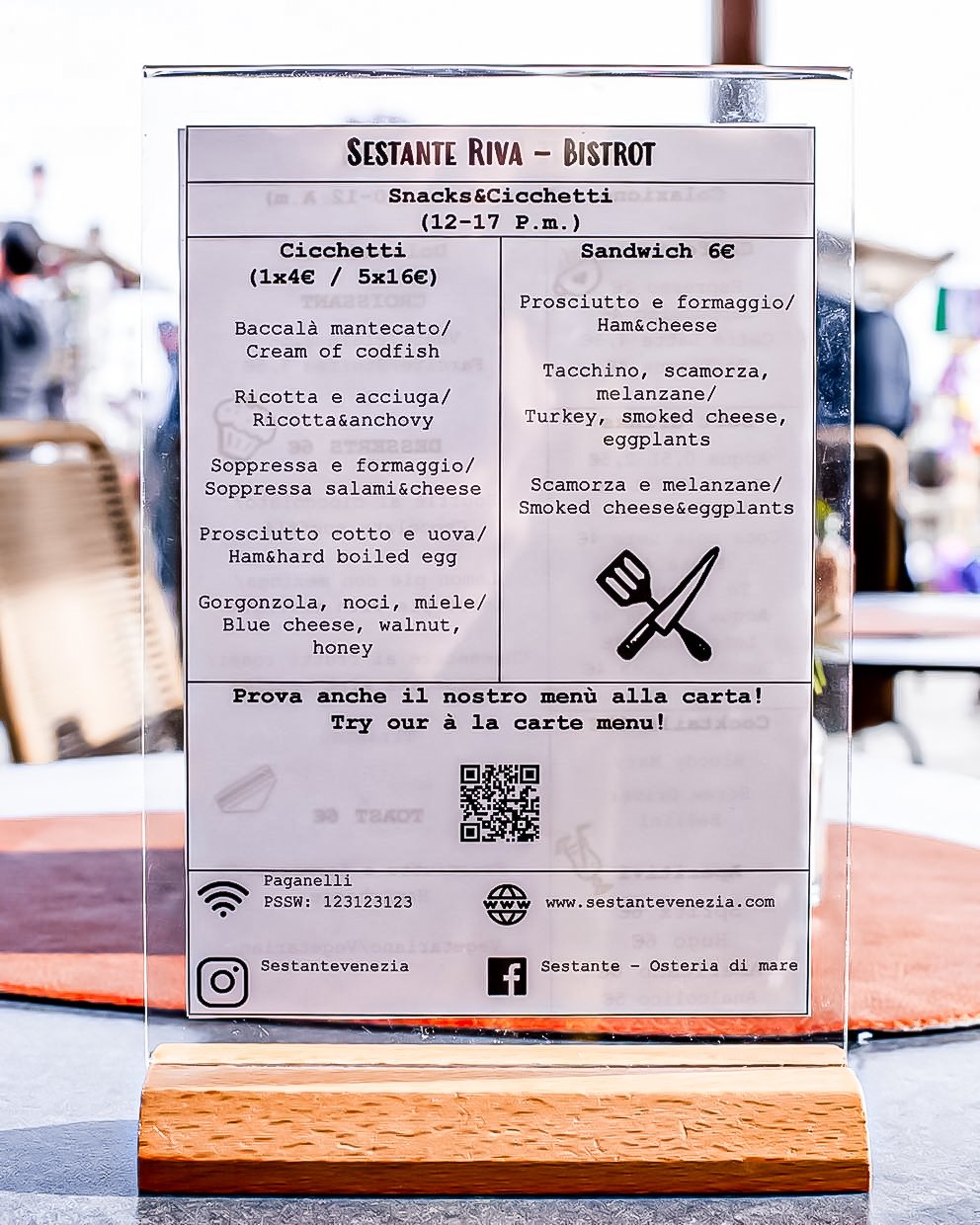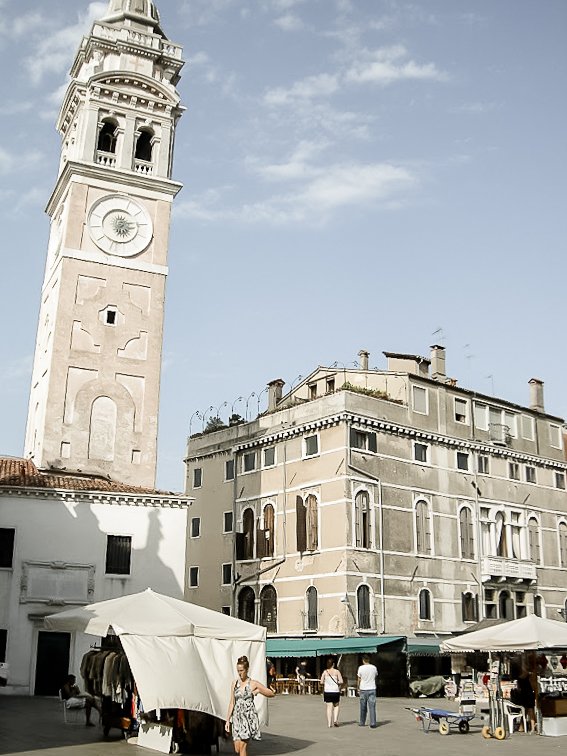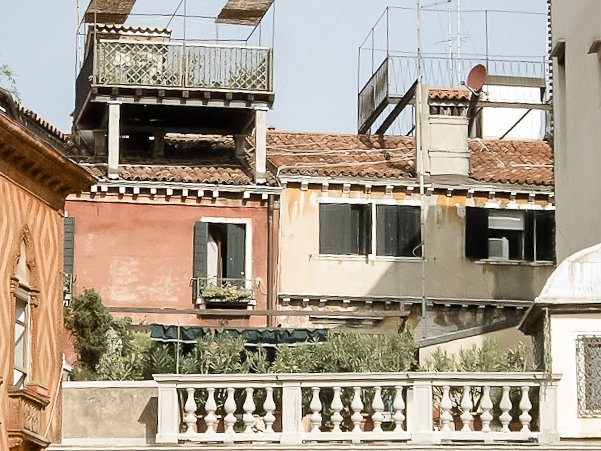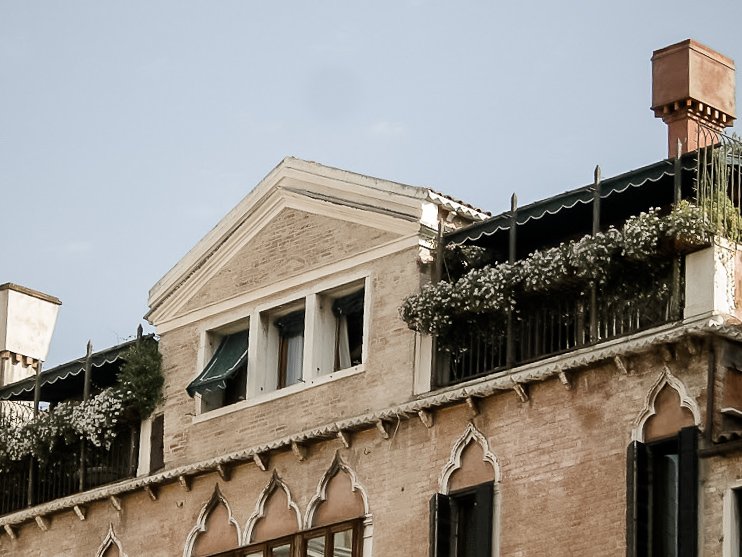LIVING AND EATING ON THE ALTANA
This is so much more than “just” an altana with a breath-taking view of the belltower of San Francesco della Vigna to the right, San Giorgio Maggiore in front of you, and Riva degli Schiavoni right below.
Because this is a terrace located on top of a building that is actually located on the grounds of the former monastery San Zaccaria. So this is a wonderful place to stop in the evening (when it’s not too hot) and enjoy a view taking you back in time. We could actually write a book about this place, which in the past was part of the convent of San Zaccaria, surrounded by a courtyard and gardens all around. And just next to San Zaccaria, the lively commercial world of Calle delle Rasse began, with merchants from Dalmatia and Greece having their warehouses and cogs (trabacoli) anchored along Riva degli Schiavoni.
An altana is a feature in daily life in Venice that’s so incredibly precious, so it’s worth learning more about them: There’s a wonderful campo in Venice where you can see the various types and sizes of altane: Campo Santa Maria Formosa.
When I first published this article on our blog in August 2012, one of our first posts included this mini-itinerary + story:
A few days ago on my way towards Rialto, I stopped in one of my favorite campi in Venice, Campo Santa Maria Formosa, located in the quiet sestriere of Castello. From here it is just a seven minutes stroll to Rialto. Campo Santa Maria Formosa is quite spacious, with week-day market stalls, bars, trattorie, and palazzi turned into cozy hotels.
On that quiet Friday morning at 9 am, I was “hunting for” altane to take pictures of, and to add to my collection of Venetian roof gardens that have always been so popular in Venice and that are usually called altane (and sometimes liagò).
With the buildings of Venice getting taller from the 14th century onwards, the altane were the place to take in fresh air, dry the laundry, and enjoy the sun in spring and autumn, and of course, the sunset!
Venetian women of the past spent much time on the altane to dye their hair by means of a particular paste, let it dry in the sun and achieve a special reddish blonde tint, as I was once told by a Venetian hairdresser. Many Venetian women today carry these color pigments, including me. By spending time in the sun (at the beach, on the altana, etc.), the hair being bleached naturally brings out that slightly reddish hue.
Entering the campo from Ruga Giuffa, you get a marvelous view of the bridges crossing Rio di Santa Maria Formosa.
Having stepped out into the Campo, I look for the bar gelateria with its huge dark green sun shades, next to Calle Lunga Santa Maria Formosa. As a child back in the 1990s, I used to come here to visit a rather tall grey-black cat sitting on the chairs and even on the tables of a cafe placed on the campo, next to the guests, with whom the was a favorite all year long, even in winter. I remember the cat sitting here on the table in the Campo next to me when I was enjoying a cup of cioccolata calda molto densa at Carnevale.
Now a few things have changed since then, for example the Hotel Vitturini has opened here, alongside with the traditional Hotel Scandinavia.
This little cafe is still a good spot to look up and scan the altane - those hanging gardens perched on top of the red roofs of Venice: They resemble terraces crowded with oleanders, laurels, kitchen herbs, that is, sometimes with and sometimes without plants but always with chairs and tables and a shade sail that protects from sun and wind.
